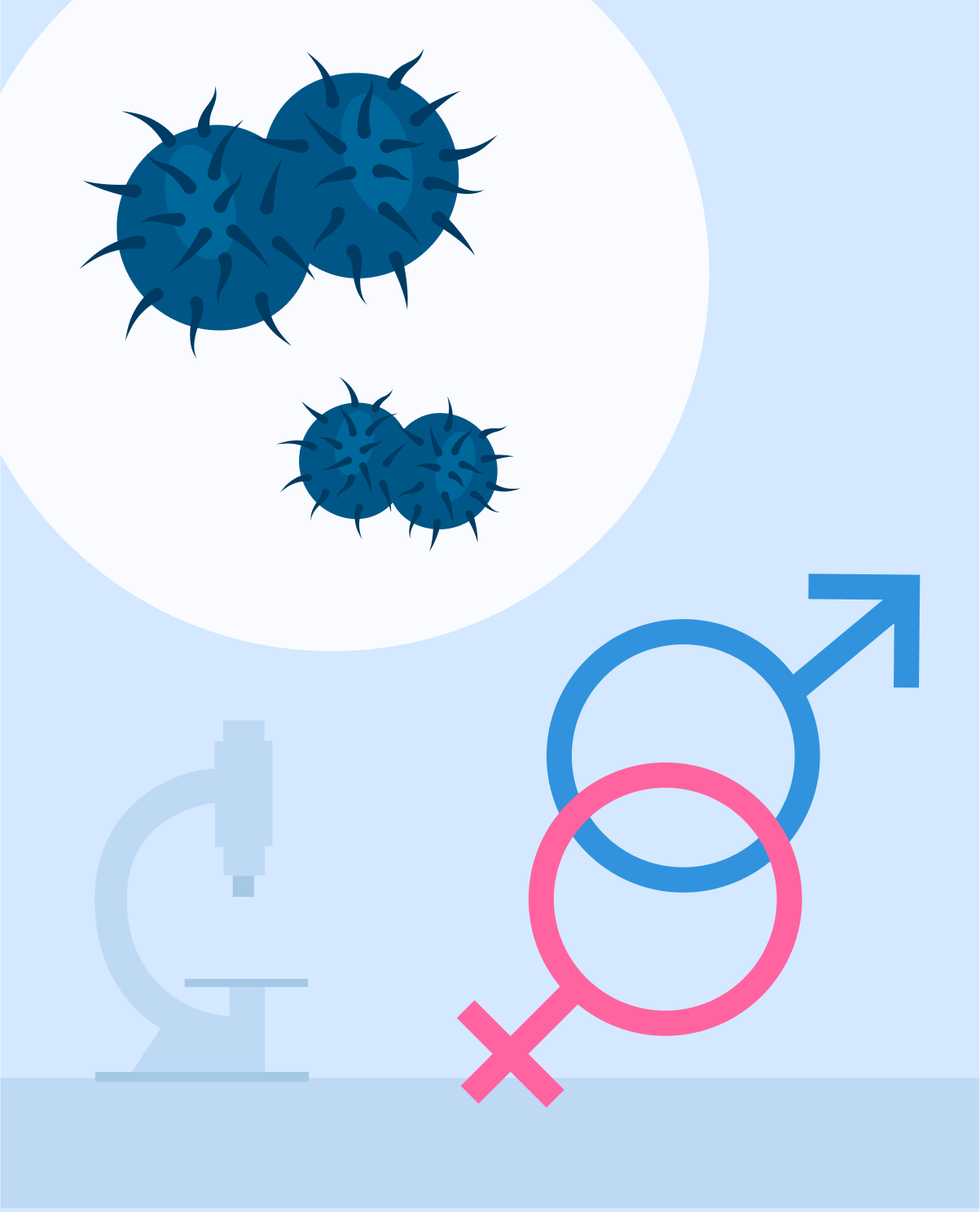Signs & symptoms associated with gonorrhea
Here are some of the common signs and symptoms associated with gonorrhea.
In Women:
- Abnormal vaginal discharge that may be green, yellow, or white in color.
- Painful or burning sensation during urination.
- Increased vaginal bleeding or spotting between periods.
- Pain or tenderness in the lower abdomen or pelvic area.
- Pain or bleeding during sexual intercourse.
In Men:
- Discharge from the penis that may be white, yellow, or green in color.
- Painful or burning sensation during urination.
- Pain or swelling in the testicles.
- Sore throat if the infection was transmitted through oral sex.
Note that many people may not experience any symptoms. As a result, the infection can go unnoticed and untreated, which can lead to serious health complications. If you suspect that you may have been exposed to gonorrhea or are experiencing any of these symptoms, it's important to get tested and treated as soon as possible to prevent further transmission and complications.
Diagnostic methods
There are several methods for diagnosing gonorrhea. These include:
- Nucleic acid amplification test (NAAT): This is the most commonly used test for gonorrhea. It involves collecting a sample of fluid or urine from the infected area and testing it for the presence of N. gonorrhoeae DNA. This test is highly sensitive and specific and can detect the infection even in individuals who do not show any symptoms.
- Gram stain: This test involves staining a sample of discharge from the infected area and examining it under a microscope. While this test is less sensitive than the NAAT, it can provide quick results and is often used in clinical settings.
- Culture: This involves collecting a sample of fluid from the infected area and culturing it on a special medium to grow N. gonorrhea bacteria. This test is less commonly used than the NAAT because it can take several days to obtain results and requires special laboratory equipment.
It's important to note that if you suspect you have been exposed to gonorrhea, it's important to get tested even if you do not have any symptoms. Early diagnosis and treatment can help prevent further transmission of the infection and minimize the risk of complications. It's also important to inform your sexual partners if you have been diagnosed with gonorrhea so that they can also get tested and treated if necessary.
Treatment of gonorrhea
The treatment for gonorrhea typically involves a single dose of antibiotics, although the exact type of antibiotic and duration of treatment may vary depending on the severity of the infection and other factors such as allergies or drug interactions. Commonly used antibiotics for gonorrhea include:
- Ceftriaxone: This is a type of cephalosporin antibiotic that is usually given as an injection into the muscle.
- Azithromycin or Doxycycline: These are antibiotics that are typically given in pill form and may be used in combination with ceftriaxone.
It is important to complete the full course of antibiotics as prescribed, even if symptoms improve or go away before completing the course. Failure to complete the full course of antibiotics can result in the infection not being fully treated, which can lead to antibiotic resistance and make future treatments less effective.
If you have been diagnosed with gonorrhea, it is also important to inform your sexual partners so that they can also get tested and treated if necessary. In addition, it is recommended to avoid sexual contact until both you and your partner(s) have completed treatment and have been retested to ensure that the infection has been fully treated.








